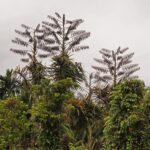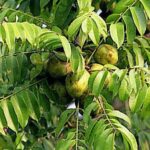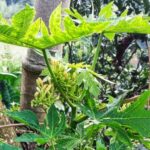The Swiss pine (Pinus cembra) goes by different names in German-speaking countries, such as ‘Zirbe,’ ‘Arve,’ ‘Arolla pine,’ or ‘Austrian stone pine.’ For generations, people have used the nuts of this particular pine species as food during the winter months, especially by farmers and hunters. Additionally, the young cones have been and continue to be used to make a cold extract for clear country liquor, Pine booze or ‘Zirben-Schnaps,’ or ‘Zirberl’ in Austria.
Description and distribution of Pinus cembra
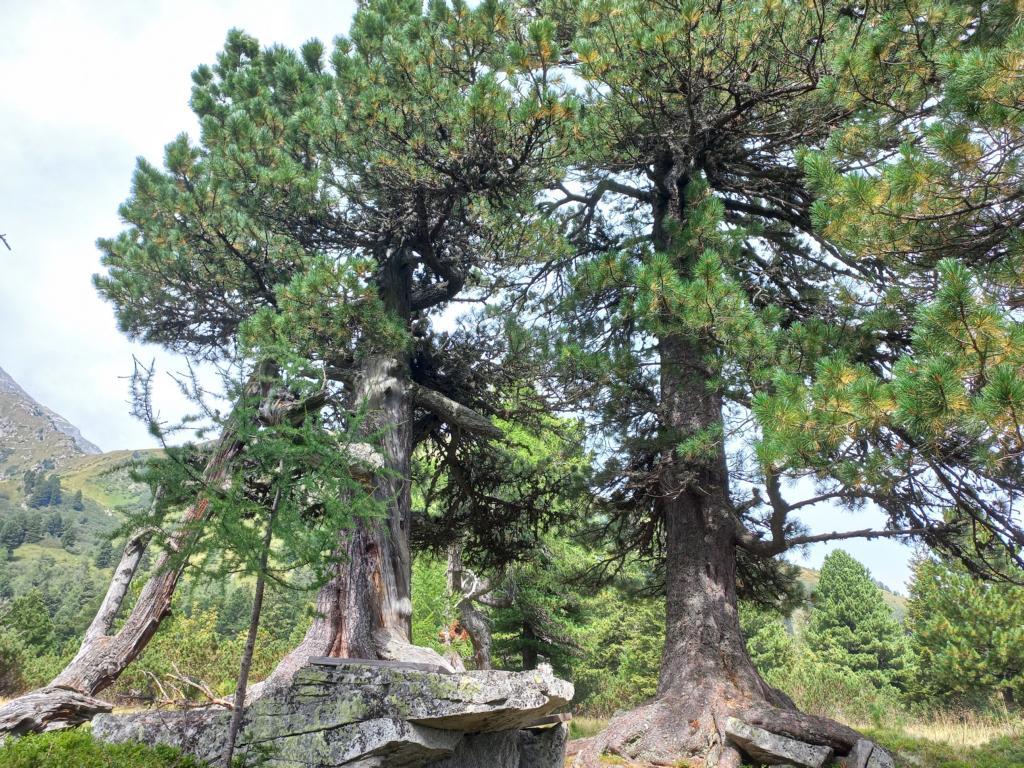
Swiss pines, also known as Austrian stone pines, earned their name due to their preference for growing in high alpine locations, particularly on or near stone boulders. These pine trees typically thrive at altitudes ranging from about 1,600 meters up to the tree line. They have a prolonged growth rate, taking approximately 30 years from germination to reach the height of a grown adult. It’s only around the age of 60 that they begin to produce cones. According to literature, they can live for up to 1,000 years. However, they often fall victim to lightning strikes because they stand out prominently amidst the shorter vegetation below. Their branches contain a substantial amount of water, making them efficient conductors of electricity.
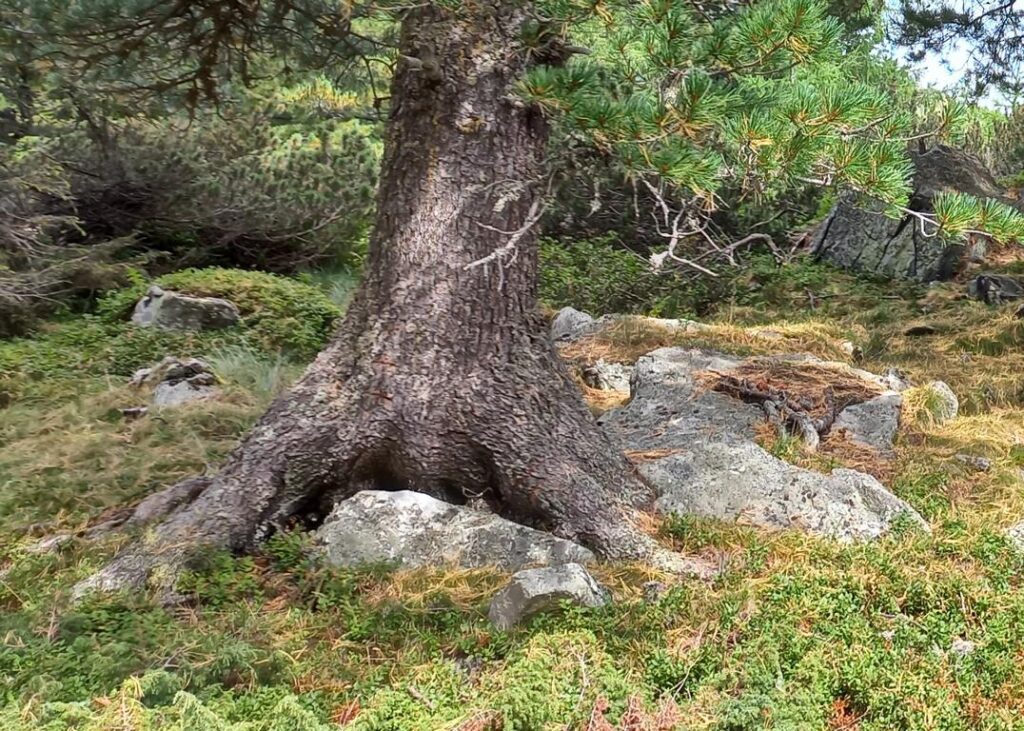
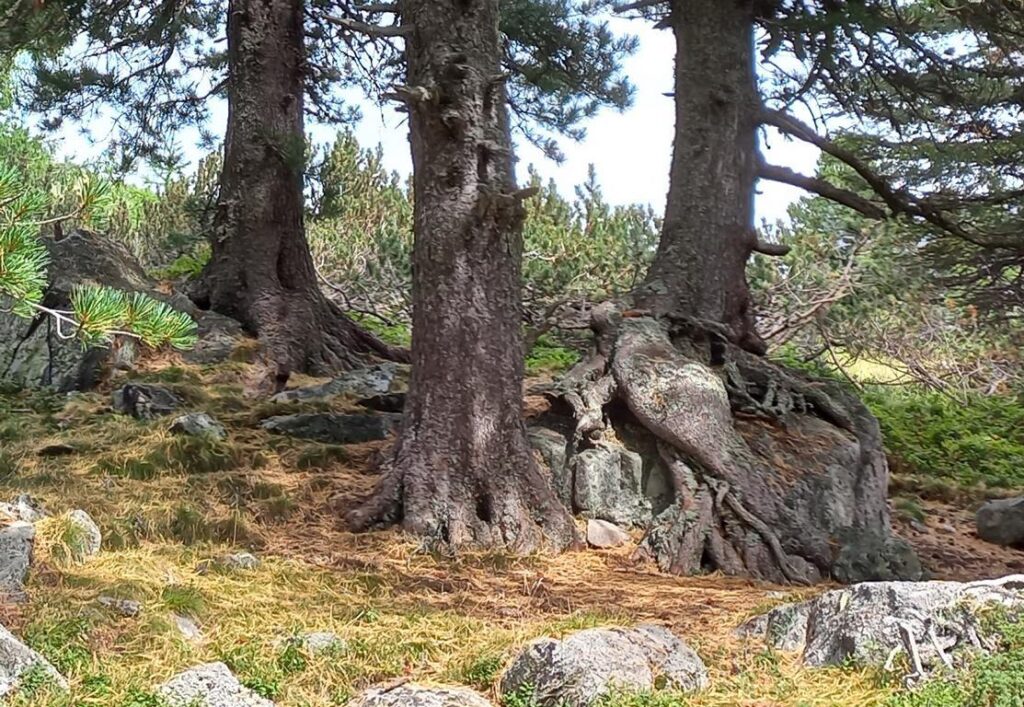
Pinus cembra is distributed throughout the high altitudes of the European Alps and makes sporadic appearances in the Carpathian Mountains.
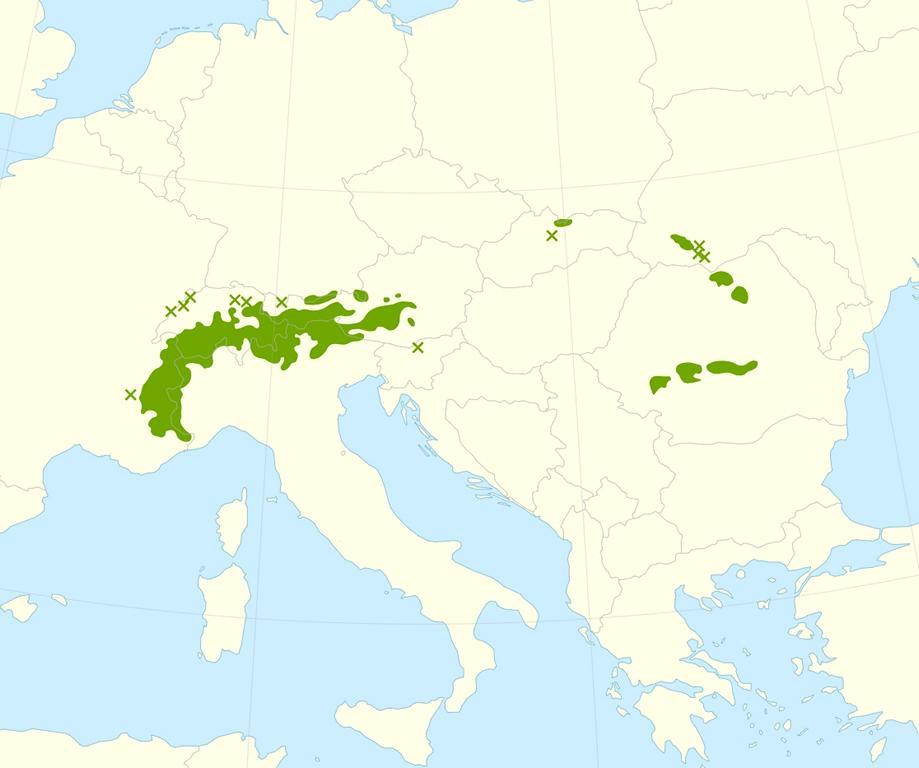
This species belongs to the ‘White pine’ group of conifers, which includes members characterized by fascicles containing five needles enclosed in a deciduous sheath. The branches consist of a central wooden core, comprising both heartwood and sapwood, surrounded by a substantial layer of green cortex featuring numerous large resin ducts. These ducts are vital in supplying ample resin to the cones and act as a defense mechanism against beetles and fungi.
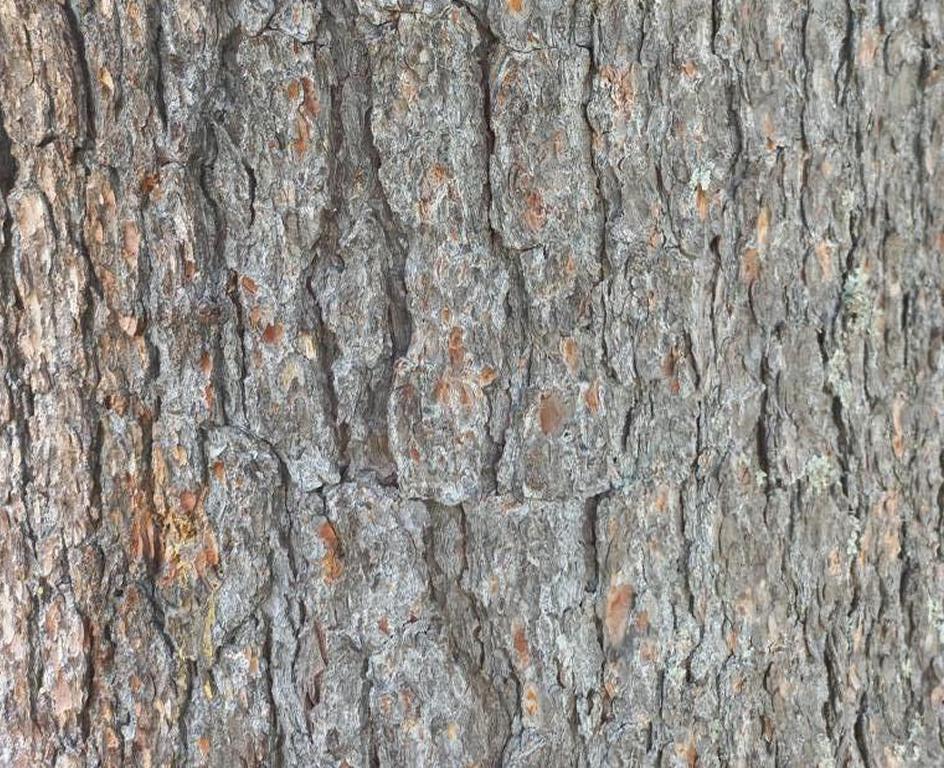
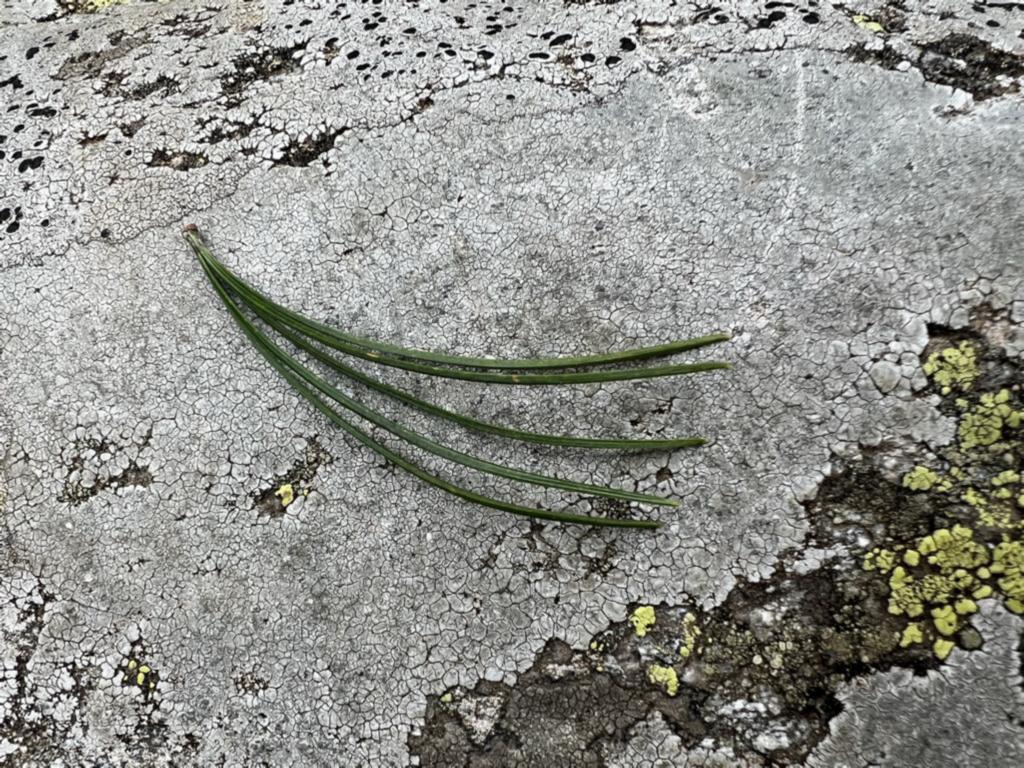
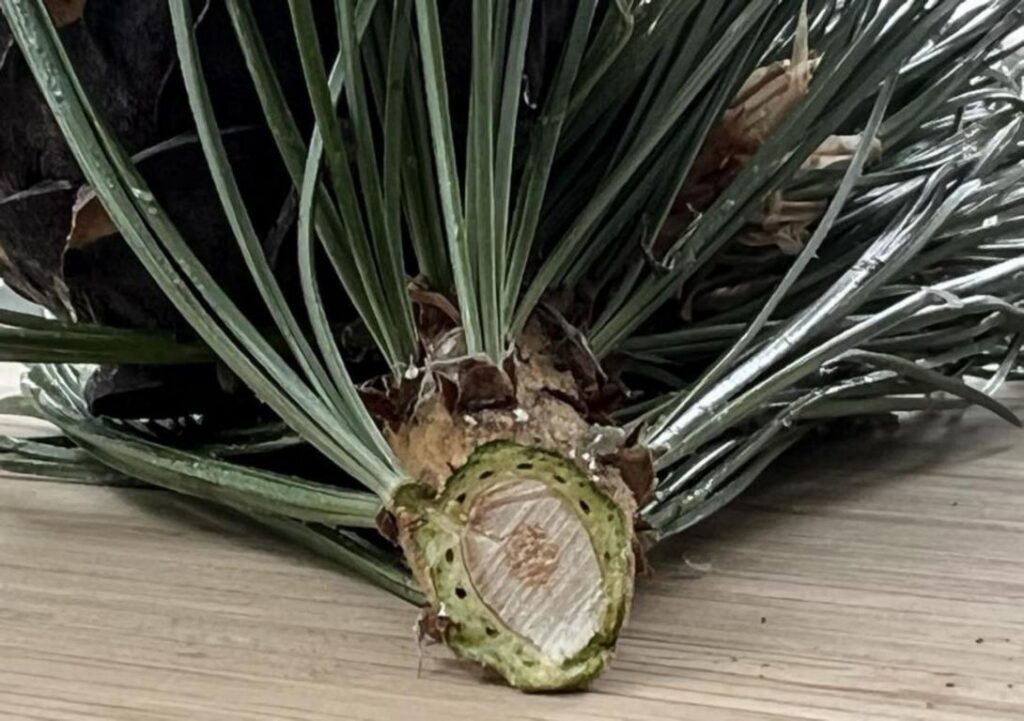
Cones of Pinus cembra and their means of propagation
Swiss pine cones take 24 months (2 years) to develop fully. The primary propagation method is through birds, particularly the Eurasian nutcracker (Nucifraga caryocatactes). These birds begin pecking at the cones when they are still immature. They extract one nut at a time from a cone and stash many of them beneath layers of moss on top of rock boulders, saving them for wintertime. These boulders stand out from the surrounding ground, partly not being covered by snow, and are therefore accessible for the birds also during the winter season. Sometimes, they forget about some of these nuts, which will start growing. Thus, Swiss pines are also called ‘Austrian stone pines’ – as they often grow on and over rocks in high-alpine areas.
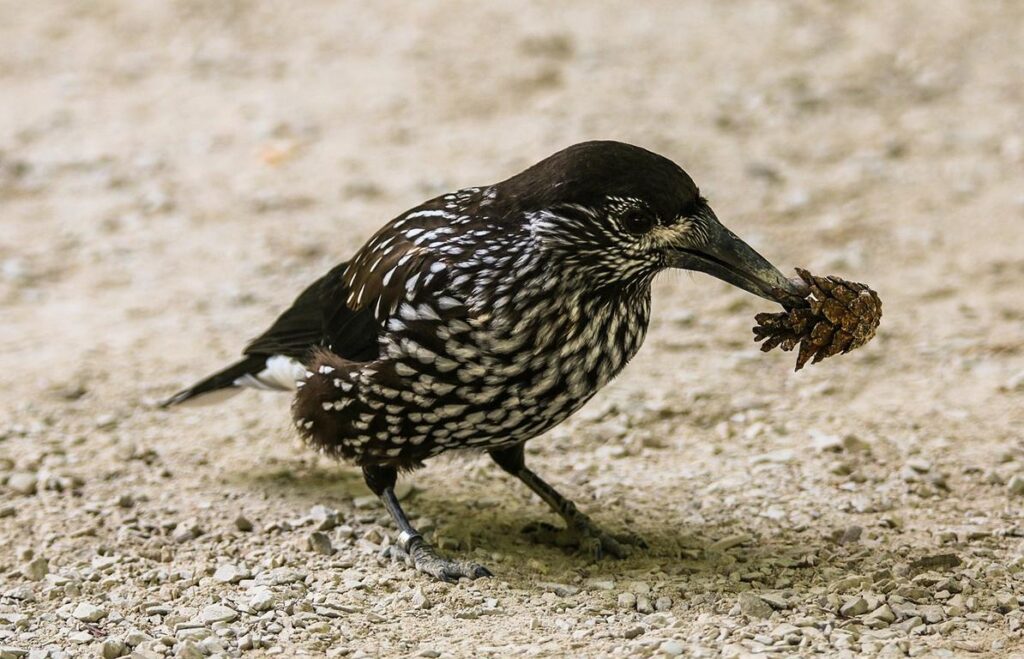
The cones typically begin maturing in early July and are usually fully ripe by the end of August, although there’s no strict rule. Some trees may still have unripe cones even at the end of August.
Finding trees with cones ready for consumption
In the past, people living in the Alps consumed a substantial quantity of these dried nuts as a winter snack or meal. When it came time to harvest them, it was a race against the nutcracker birds. People started checking for cone ripeness from early July onwards to stay ahead of these birds. Instead of collecting the cones, they relied on the nutcracker birds to guide them. These birds have a unique trait; when they discover a tree with cones ready for consumption, they emit a loud, croaking call. The observer can then determine the direction or specific location of such a tree based on the nutcracker’s call.
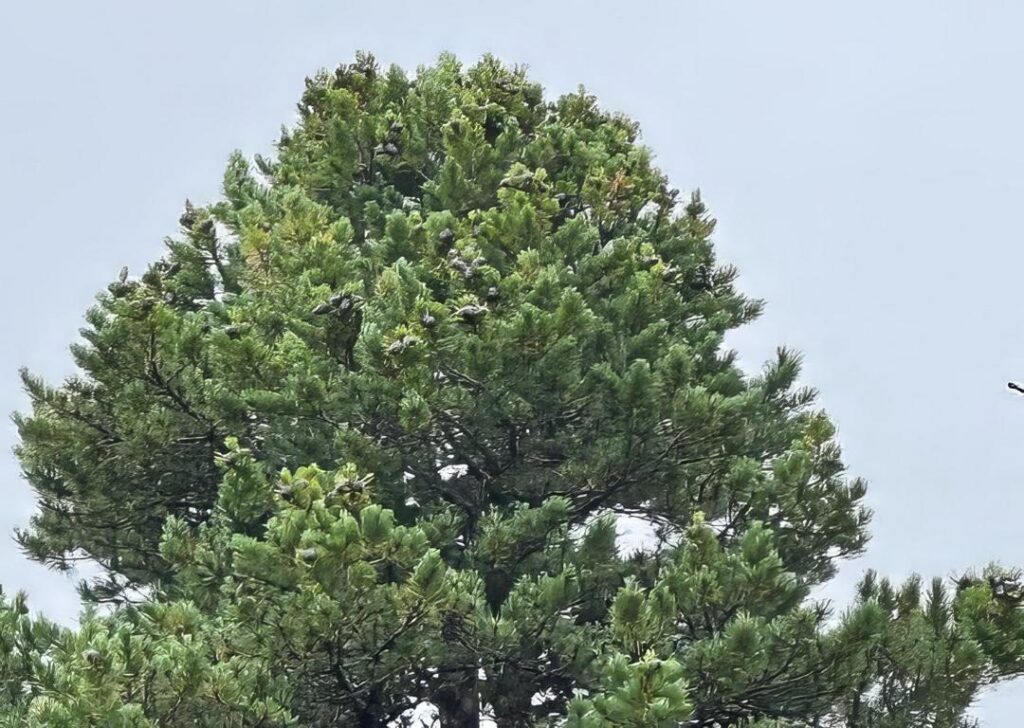
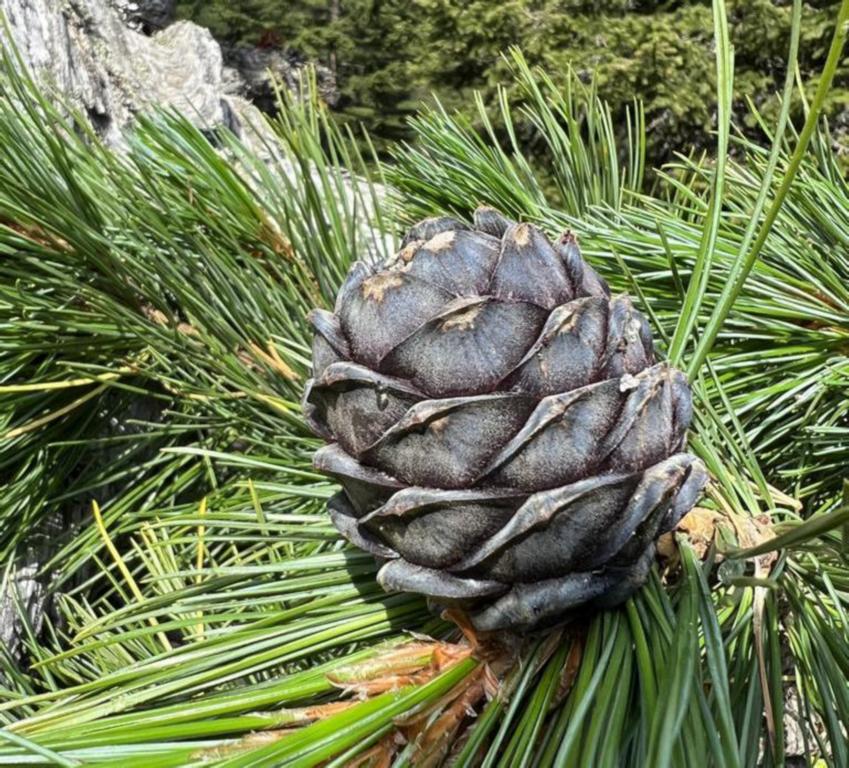
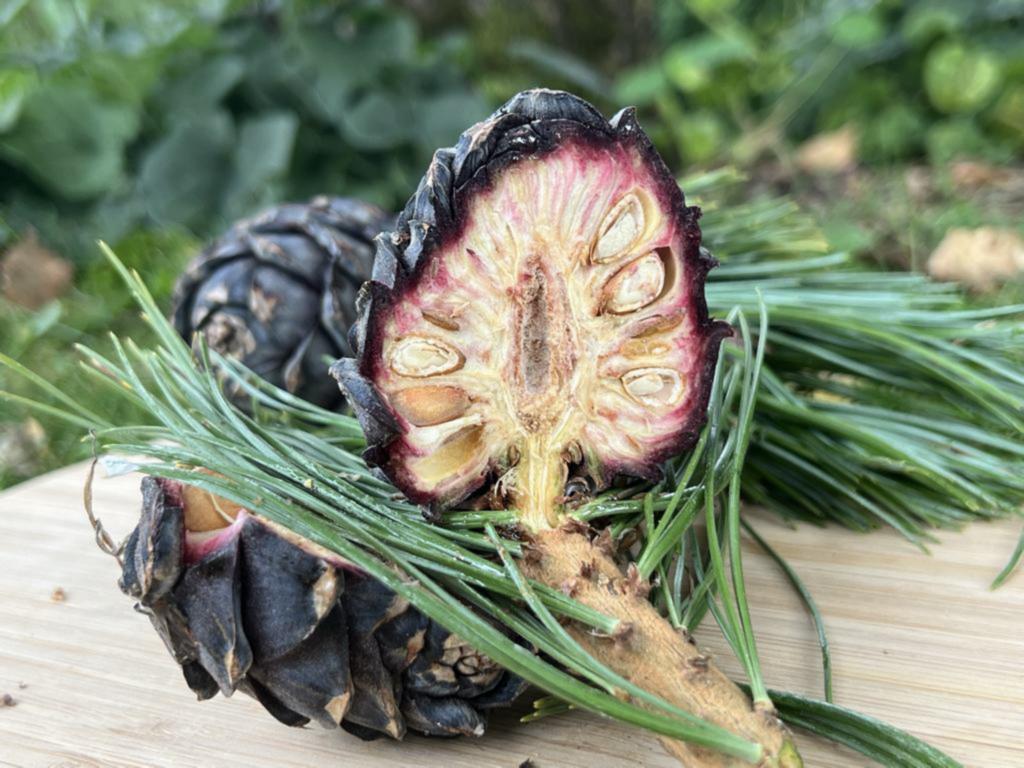
When climbing a Swiss pine tree, it’s essential to know that the wood is quite brittle. While the branches may appear sturdy enough to support a person, only two-thirds of the diameter is often solid wood that can break easily. Therefore, extra caution is necessary when ascending these trees to collect cones.
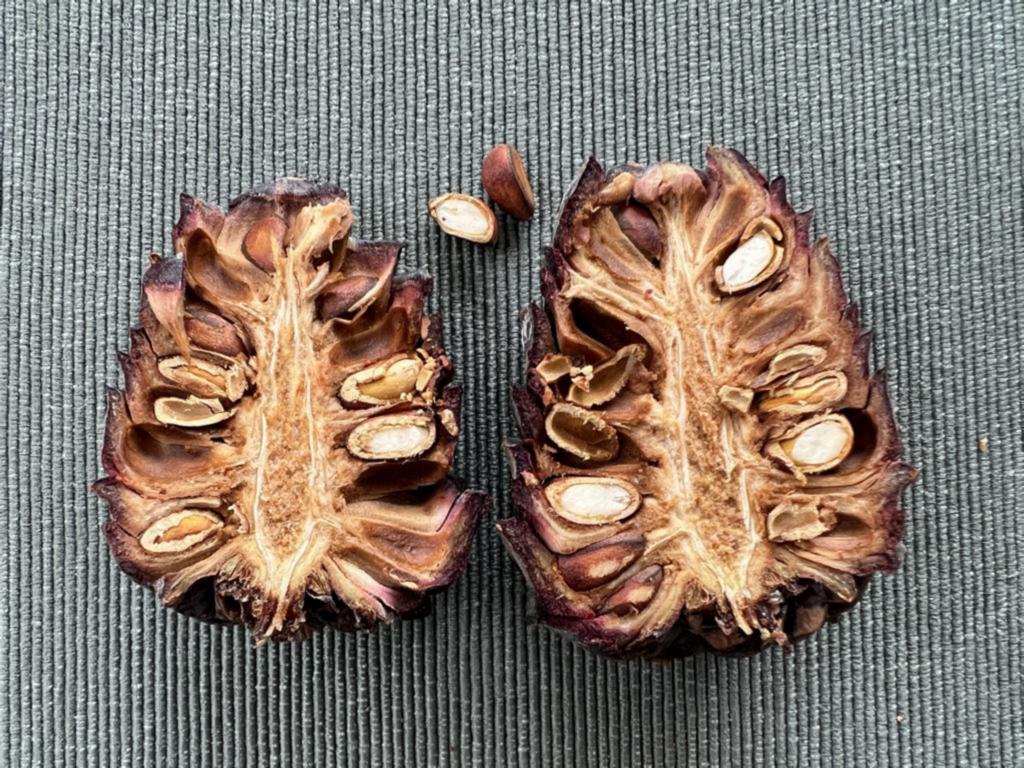
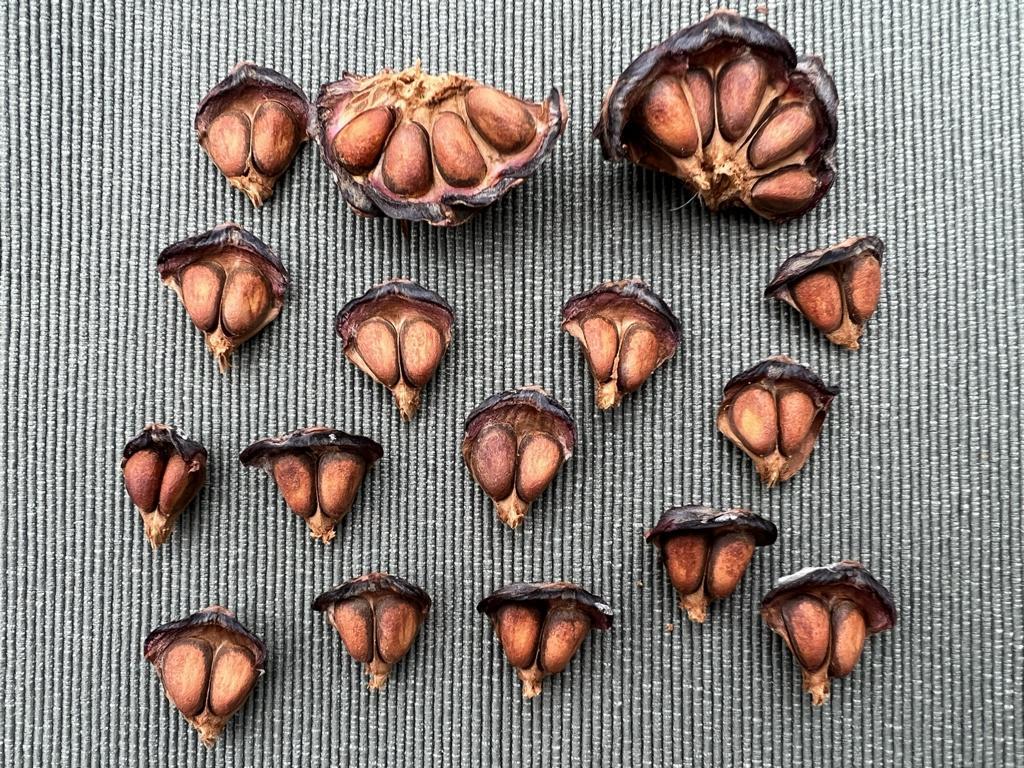
In addition to harvesting cones directly from the trees, many pecked-open cones can be found on the ground beneath these trees. These cones often still contain nuts, and many of these nuts are perfectly suitable for consumption.
Pine nuts for food
Typically, cones are gathered while the nuts are still unripe, as waiting too long would give the nutcracker birds an advantage. These collected cones are then spread out in a dry and sunny location, allowing the nuts to mature appropriately.
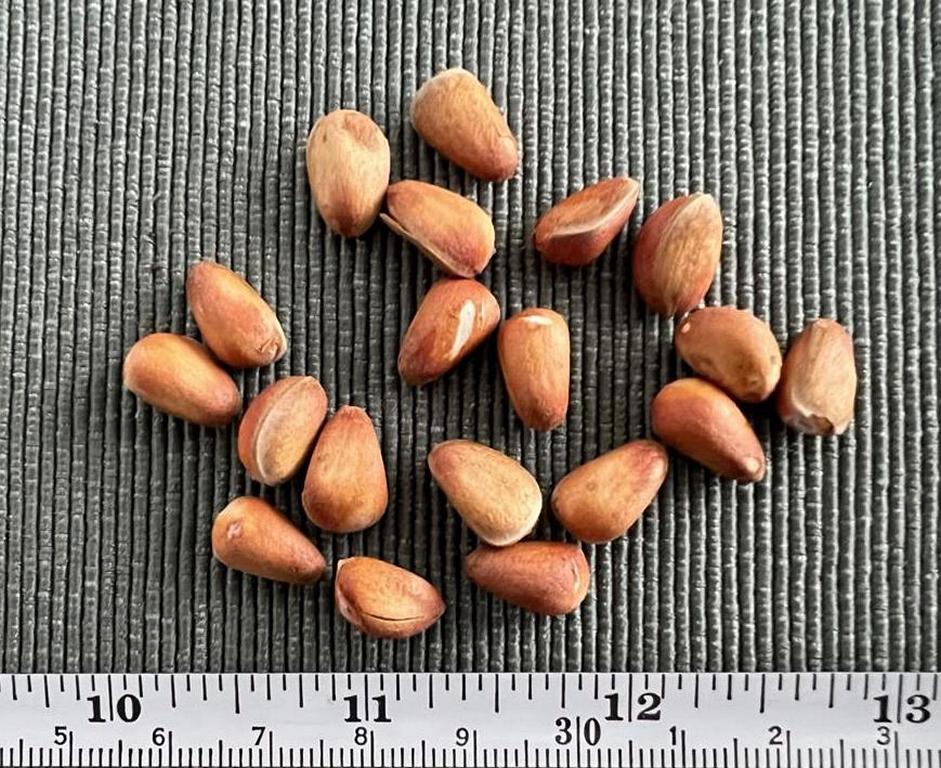
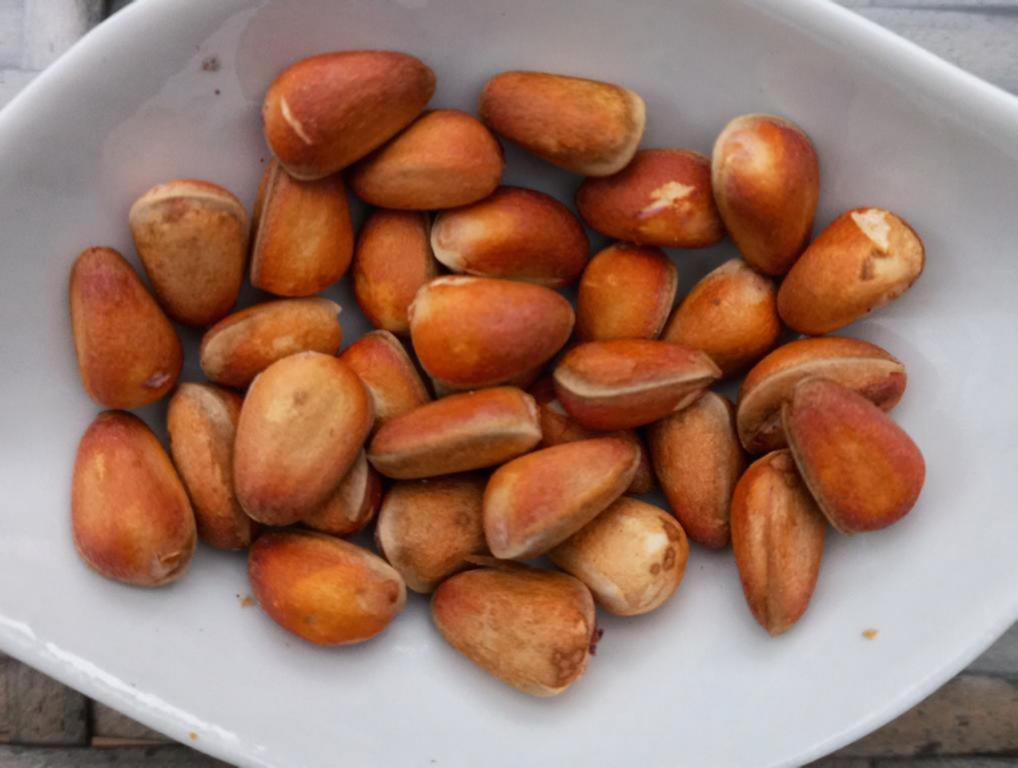
Immature nuts are characterized by their light orange color and a thin white stripe where the two shells meet.
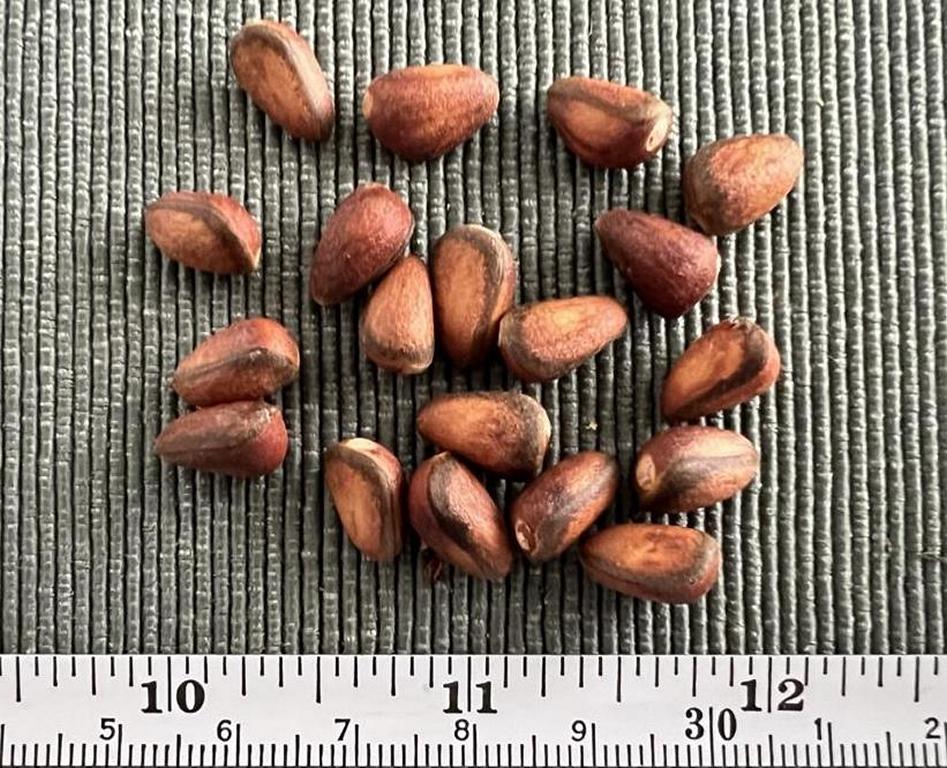
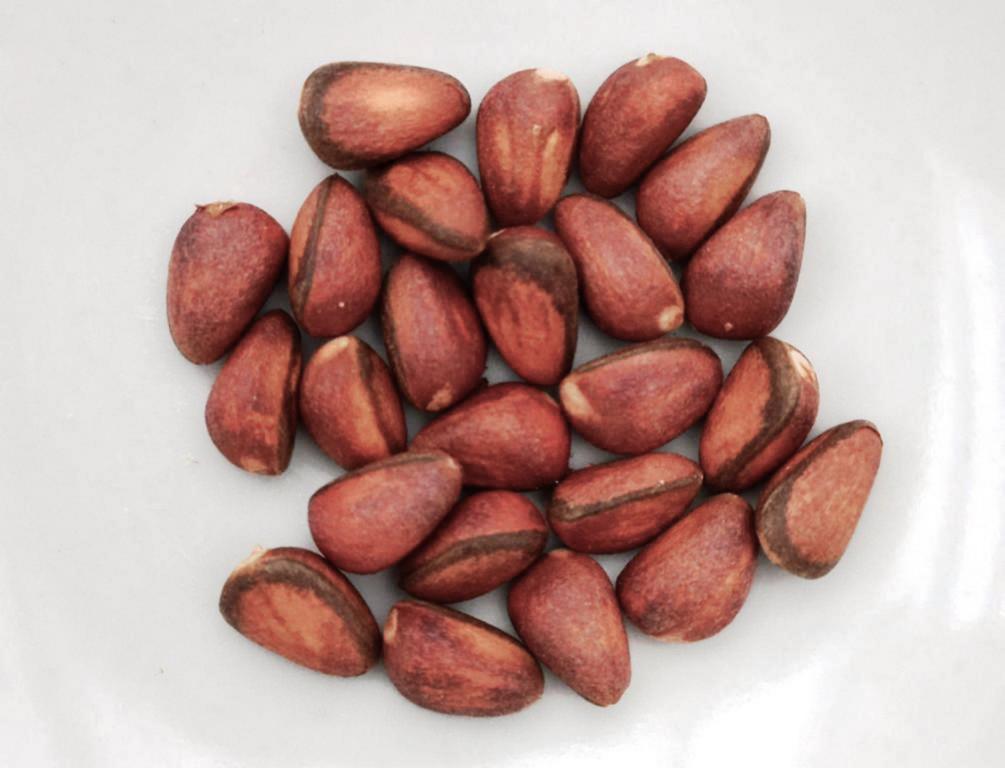
Mature nuts have a peanut-brown color with a blackish stripe at the edge.
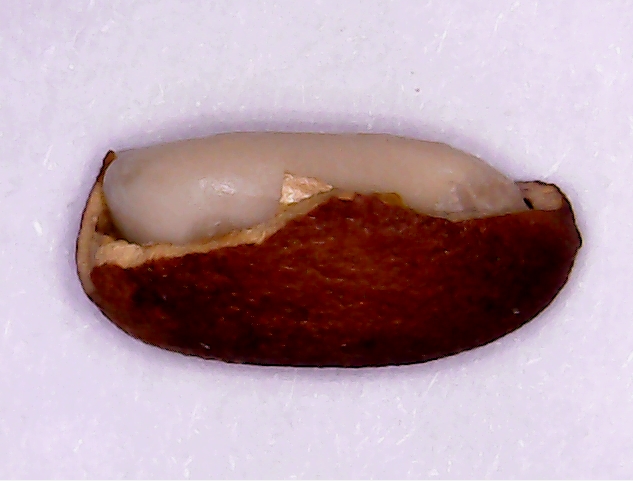
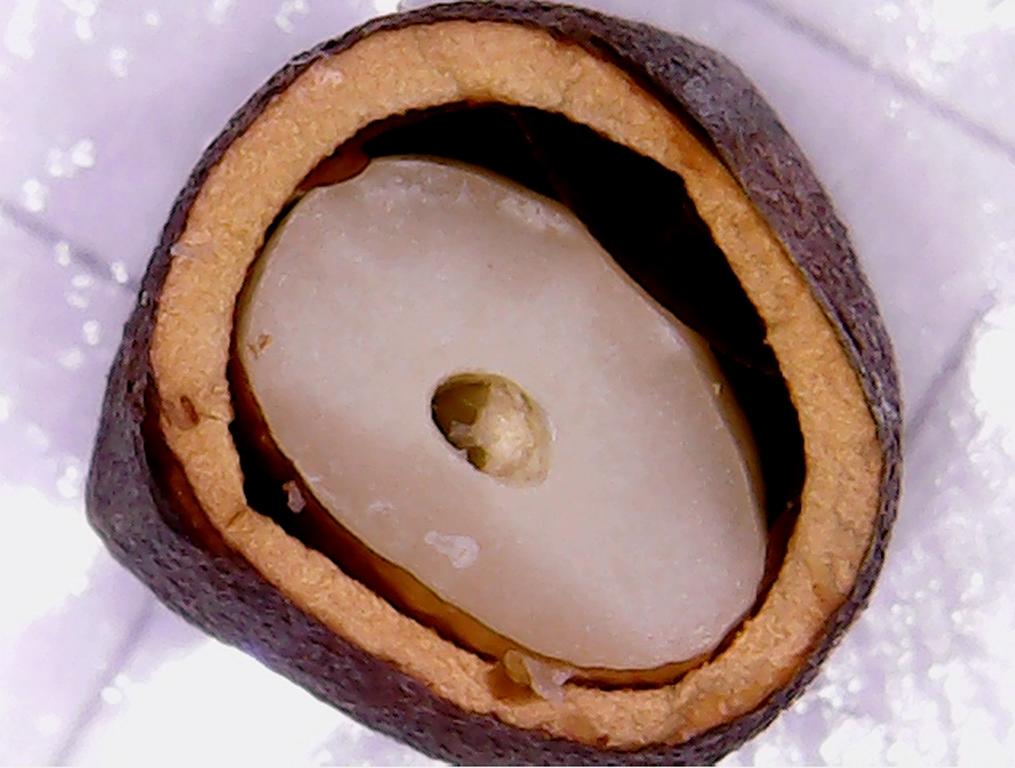
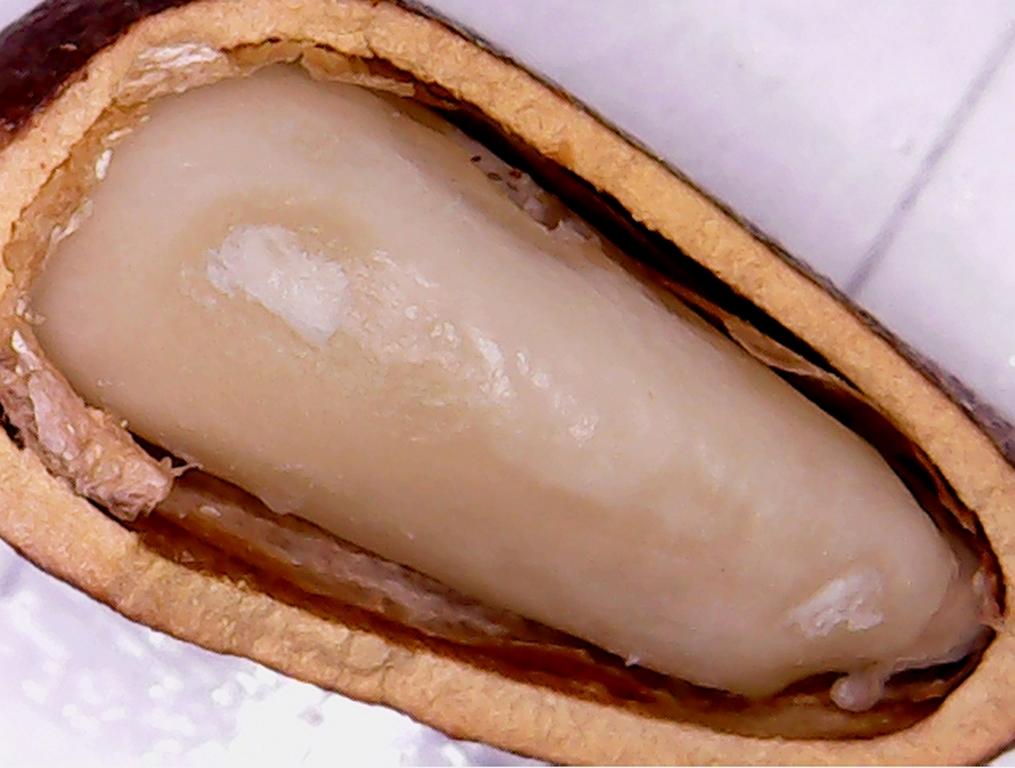
The collected Swiss pine nuts were, on average, 11 mm / 0.43” long and had a shell thickness of 0.5 mm / 0.019”.
Ripe Swiss pine nuts are exceptionally nutritious. They contain approximately 673 calories per 100 grams, which is equivalent to roughly 500 shelled nuts (1 cup weighs about 135 grams). They comprise about 68% fat, 14% proteins, approximately 13% carbohydrates, and other nutrients.
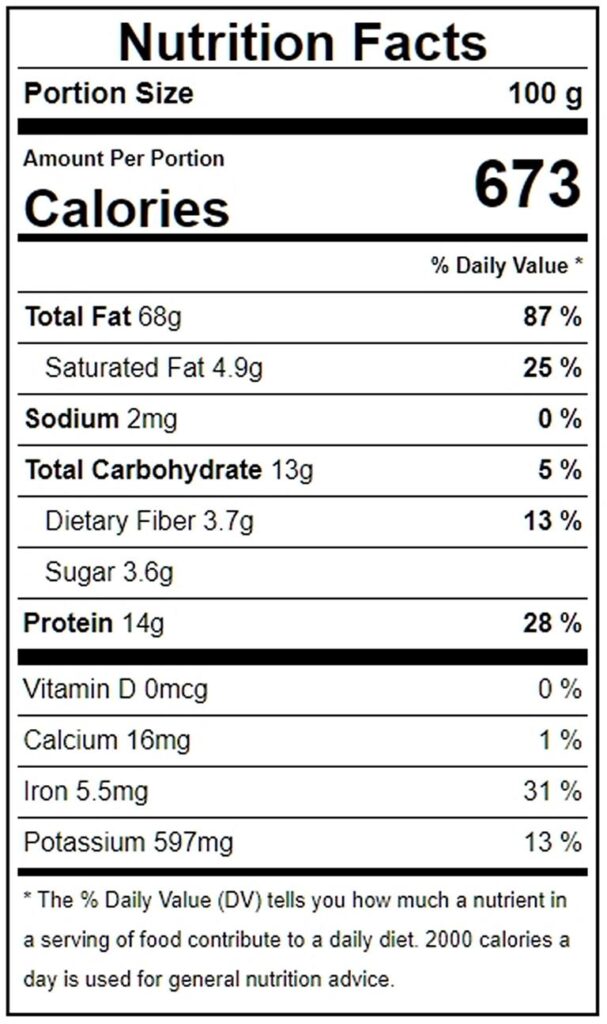
The tradition of using Swiss pine nuts for food has significantly diminished in their native regions. This decline is primarily because these cones are the property of the landowner where they grow, and harvesting them without the owner’s consent is illegal. The Swiss pine tree is a protected species, and the number of cones that can be legally harvested varies by province. For instance, the limit is set at three cones per day in places like the Austrian province of Carinthia.
Today, ripe pine cone nuts from similar species like Pinus sibirica and others are primarily produced in Russia and Mongolia. They are mostly sold for human consumption in China and as bird feed in Western countries.
Producing ‘Zirben-Schnaps’ by cold extraction
Swiss pine cones are gathered for food and used to create a distinctive type of schnapps in Alpine regions. As previously mentioned, immature cones are employed to infuse flavor and color into liquor, resulting in ‘Zirben-Schnaps’ or ‘Zirberl.’
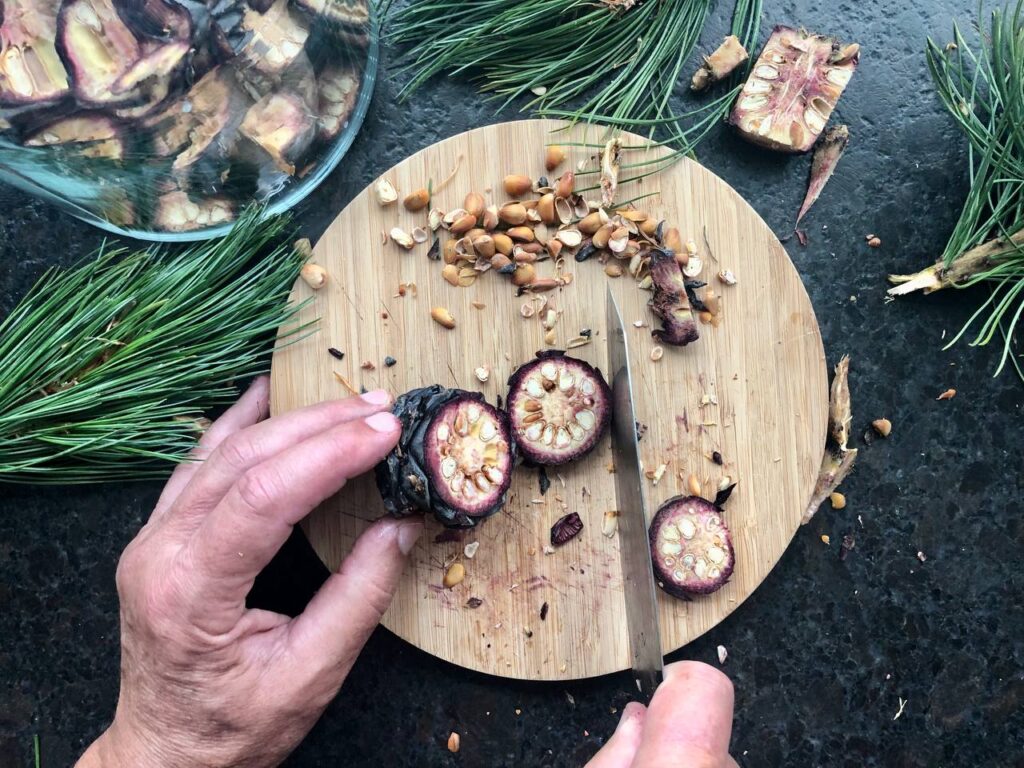
The process involves placing pieces of immature cones into clear liquor and some sugar, and allowing it to sit in a warm, sunny location for 2 to 6 weeks. After straining, the Zirben-Schnaps is ready to be enjoyed.
Details to produce Zirben-Schnaps
- When cut, the cones should still be soft, and their outer skin should be moist and deep red.
- Typically, cones are sliced either transversely into 5 mm thick pieces or vertically into quarters. However, both cutting directions have the drawback of including parts of the inner wooden structures of the cone, which can make the schnapps bitter. This is because each leaf of the cone, containing two nuts each, is connected by a wooden string to the stalk. Simply cutting out the stalk alone won’t eliminate all the tannic acid-containing wooden structures.
- Experience has shown that it’s better to cut off only the red skin, including the immature nuts, and discard the remaining stalks.
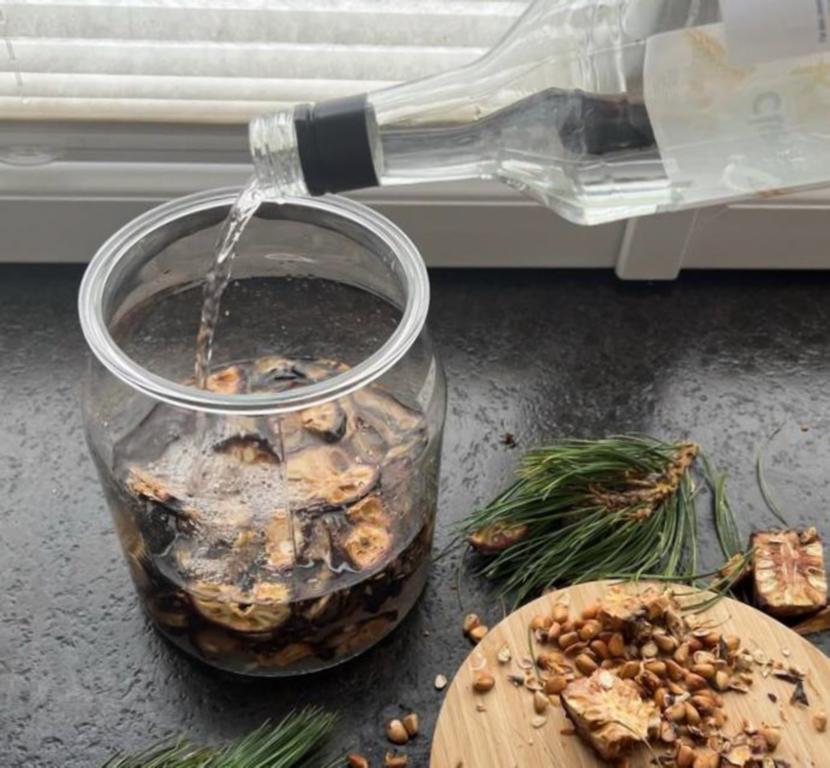
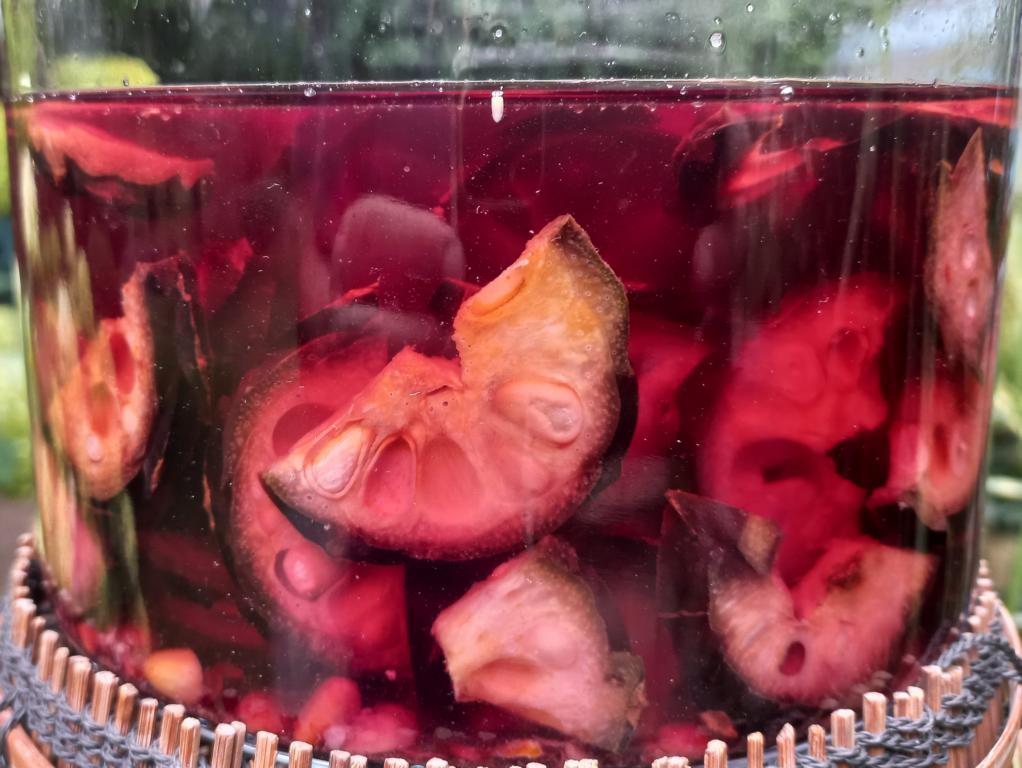
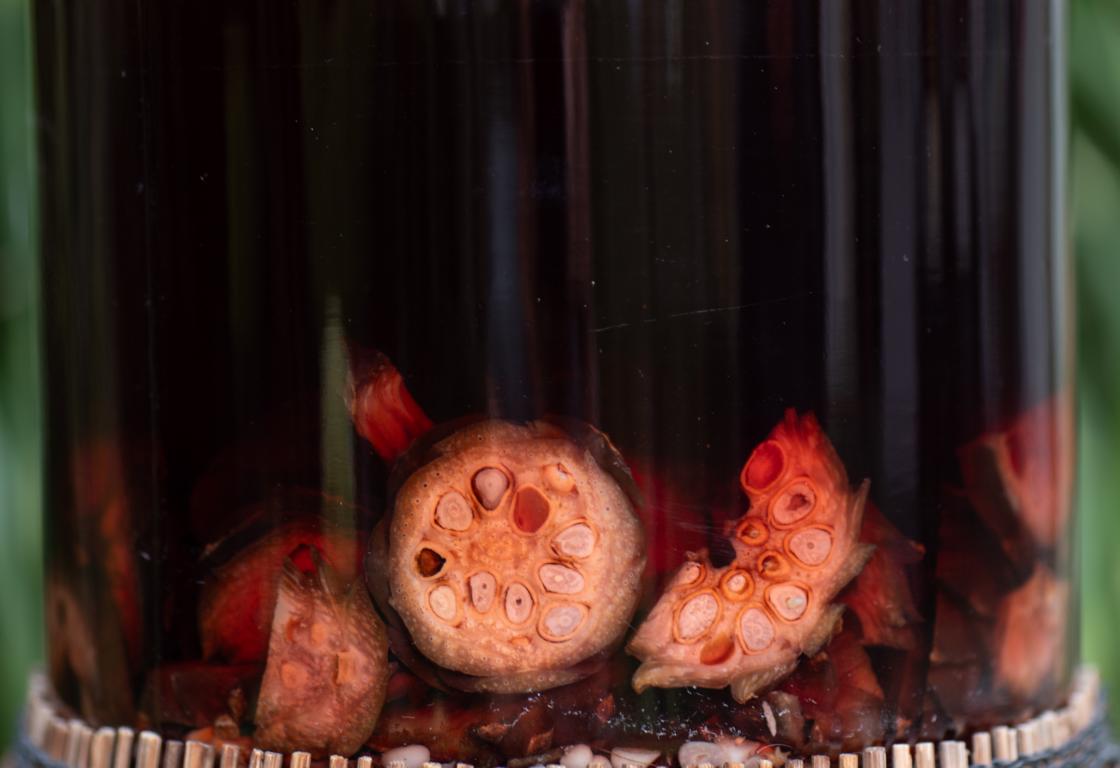
- The initial liquor used should be around 40% ABV (Alcohol by volume) and have a smooth taste and no distinctive flavor on its own. Three common types of schnapps used for this process are ‘Korn’ (liquor distilled from wheat), Vodka, or ‘Obstler’ (a strong, locally brewed apple-based booze). While ‘Korn’ is a viable option, consider using a high-quality vodka like ‘Absolut’ from Sweden, ‘Finlandia’ from Finland, or any other smooth vodka brand.
- For every liter (approximately 1 US liquid quart) of vodka, add 3 – 4 cuttings of Swiss pine cones and 50 grams (1.76 ounces) of white crystalline sugar.
- Lastly, while the concoction is on the windowsill, it’s essential to taste it regularly after about 2 weeks to prevent it from becoming too bitter from tannins. Strain the mixture before it gets too bitter and transfer it into bottles.
Lessons learned from Swiss pine cones and their uses:
- Swiss pines are limited to high altitudes in the European Alps and Carpathian mountains.
- A narrow time window exists for harvesting cones at the right maturity for both consumption and liquor flavoring.
- Eurasian nutcracker birds play a crucial role in propagating these trees and primarily feed on these nuts.
- Mature Swiss pine nuts are highly nutritious.
- ‘Zirben-Schnaps’ is a local specialty in Austria crafted from young cones.



